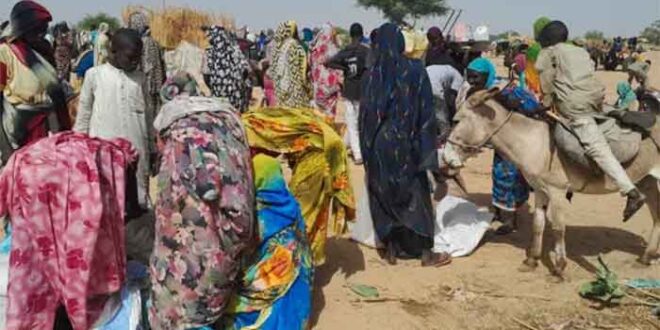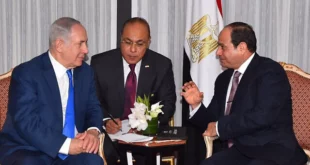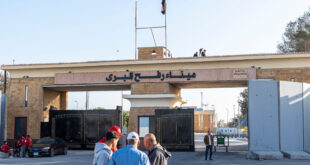The world is changing. In fact, it has been undergoing seismic change that long preceded the Russian-Ukraine war, and the recent US-Chinese tensions in the Taiwan Strait.
In fact, the US debacle in Iraq and the Middle East, and the humiliating retreat from Afghanistan were only signs of the decline in US power.
Leading US neoconservative strategists have once argued in “Rebuilding America’s Defenses: Strategies, Forces, and Resources For a New Century” that aggressive intervention policies were meant to keep emerging great powers, like China, out of areas designated as US geopolitical domains. They sought to “preserve and extend (US) position of global leadership (through) maintaining the preeminence of U.S. military forces.”
They failed, and the future seems to head in a different direction than what the likes of Dick Cheney, John Bolton, Richard Perle and Paul Wolfowitz had hoped for.
Instead, a whole new world order is emerging, one that is hardly centered round US-western priorities alone.
Indeed, what has taken place since the start of the Russia-Ukraine war in February 2022, and the provocative visit by then-US House Speaker, Nancy Pelosi, to Taipei in August of the same year, are an acceleration of an existing momentum of global shifts, that ranged from the emergence of new economic alliances, geopolitical formations, turf wars and, of course, competing political discourses.
These changes are currently on full display in the Middle East, Africa and, indeed, much of the Global South.
While this can be considered a positive development, in the sense that a bipolar or multipolar world can offer alternatives to countries that have been at the receiving end of US-western exploitation and violence, it can – and will – have negative manifestations as well.
More Than a Power Struggle
Though the current war in Sudan is understood to be a power struggle between two rival generals or, more accurately, corrupt warlords, General Abdel Fattah al-Burhan and General Mohamed Hamdan Dagalo, or Hemedti, it is also partly the outcome of a regional, and, increasingly, global power struggle as well. The regional and global dimension of the conflict in Sudan is itself an expression of the changing world order and the intense fight over resources and critical geographies.
Sudan is one of the richest African countries in terms of raw material, much of which remains un-exploited due to the country’s multifront and multilayered conflicts, starting in the South – which has led to the secession of the Republic of South Sudan, then West, namely Darfur and, as of now, everywhere else.
The North-South civil war and the Darfur crisis, too, were sustained and prolonged by outside parties, whether Sudan’s own neighbors or global powers. Sadly, in all these cases, the outcome was horrific in terms of human and material losses.
Sudan, however, was not the exception. Proxy wars in the Global South were one of the main features of the Cold War between Washington and Moscow, until the collapse of the Soviet Union in 1989-92. The dismantlement of the USSR, however, only exacerbated violence, this time channeled mostly through US-led or championed wars in the Middle East, Africa and Asia. Now that global rivalry is back with a vengeance, global conflicts, especially in resource-rich and strategic regions with no clear political allegiances, are also back.
Sudan will not be the last of such conflicts.
What complicates the picture in Sudan now is the involvement of other regional actors, each with a specific set of interests, as they take advantage of the quickly dwindling US leadership, which, till recently – was the Middle East’s primary political and military hegemon.
The current shifts in power relations in the Middle East – as in other parts of the world – are also significant within historical, not merely current political contexts.
History Reversed
Since the Sykes-Picot Agreement was signed in 1916 between old colonial powers – France and Britain – with a minor, but still important involvement of Tsarist Russia, the Middle East and North Africa, along with Central Asia, were divided into various spheres of influence. Global priorities then were almost entirely Western.
The Bolshevik Revolution in 1917 was a watershed moment in world history, as it sowed the seeds for a possibility of a new global bloc to rival Western domination.
It took decades for that new bloc to emerge. In 1955, the Warsaw Pact was born, “unifying the Soviet Union and its allies against the North Atlantic Treaty Organization (NATO), a Western military alliance that saw the light six years earlier.
The rivalry between both camps was expressed in fierce economic competition, a political Cold War, a low-grade military conflict, proxy wars and two distinctly ideological discourses that defined our understanding of world politics for much of the 20th Century.
All of this came to a bitter end in the early 1990s. NATO won, while the Warsaw Pact, along with the USSR, disintegrated rapidly and in the most humiliating fashion. It was “the end of history”, Francis Fukuyama declared. It was the age of Western triumphalism and, by extension, more colonial wars, starting in Panama, then Iraq, Serbia, Afghanistan, Iraq again, and elsewhere.
China factored in all of this, not as a major global political player, yet, but as a worthy adversary and prized ally. The historic visit by US President Richard Nixon to Beijing in 1972 thwarted efforts to unify the East against US-Western imperialism. That trip, which supposedly ‘changed the world’ – per the assessment of then-Ambassador Nicholas Plat, was indeed consequential. It was the beginning of the end of the Soviet Union as it gave Washington a massive advantage and strategic boost over its rivals.
But history is now being reversed in ways that only a few geopoliticians could have possibly predicted.
The New Powers
The road ahead is not entirely clear. But numerous signs, accompanied by tangible changes, suggest that the world is transforming. However, this metamorphosis is more visible in some regions than others. The geopolitical tug-of-war between old and new global rivals is most visible in the Middle East and Africa, in addition, of course, to South America, East Asia and Pacific regions. Each of these regions is undergoing its own re-ordering of power relations and dynamics.
In the Middle East, for example, Iran seems to be breaking away from its West-imposed isolation, while Saudi Arabia is challenging its old client regime status.
The latter move is particularly troubling for Washington, as it challenges two layers of Western domination of the Middle East: one which followed the Sykes-Picot agreement in 1916 – thus dividing the region into subregions under Western ‘protection’ and influence; and the other which resulted from the US-NATO invasion of Iraq. With massive political sway, an ever-growing military presence, and a weaponized US currency, Washington had dominated the Middle East with no serious competition for many years. This is no longer the case.
For years, Russia and China have been staking claims in the region, though using mechanisms that are wholly removed from the Western style of old colonialism and neocolonialism. While the Russians tapped into their long Soviet tradition of cooperation, the Chinese resorted to a more ancient history of friendly trade and cultural exchanges.
Now that Beijing has developed a more candid and unapologetic approach to foreign policy, China’s status as a new superpower shall demonstrate its effectiveness in the Middle East in unprecedented ways. In fact, it already has. The recent Iran-Saudi Accords was a tremendous achievement for the new politically-oriented China, but the road ahead is still very challenging, as the region is rife with foreign contenders, and old and new conflicts. For China to succeed, it must present itself as a new and better model, to be contrasted with Western exploitation and violence.
But China does not hold all the keys, as the US and its Western and regional allies continue to hold significant influence. For example, the UAE is emerging as a powerful player in the current war in Sudan.
What is certain is that the consequences of the current fight for resources, influence and domination are likely to lead to smaller, though bloody conflicts, especially in countries that are politically and socially unstable. Sudan fits perfectly into this category, which makes its current war particularly alarming.
Although much has been said and written about Sudan’s gold, agriculture potential and massive wealth of raw materials, the fight over Sudan by outside parties is essentially a turf war due to Sudan’s unparalleled geopolitical location. Egypt, Ethiopia, UAE, Israel, and others are all keen to emerge winners in the ongoing war. Russia is monitoring the situation closely from its various African bases. The US, Britain and France are wary of the dire consequences of direct intervention and the equally costly price of no intervention at all. China is still gauging the challenges and opportunities.
The outcome of the bloody Sudan war is likely to redefine, not only Sudan’s own political balances but the power relations of the whole region as well.
 Eurasia Press & News
Eurasia Press & News




